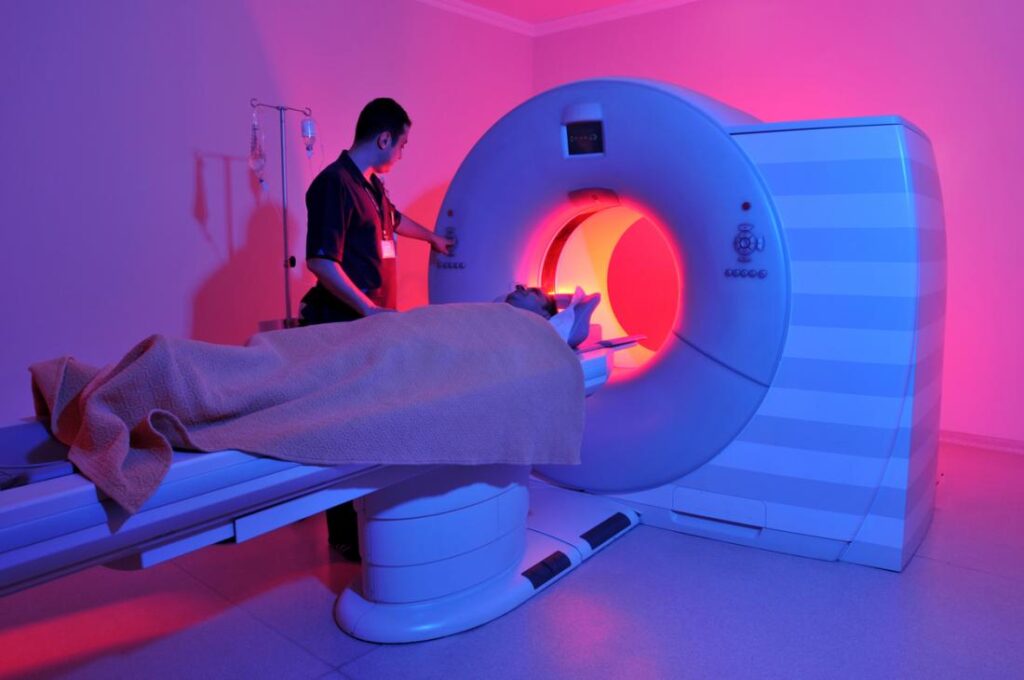Prostate cancer is the second most common cancer in men worldwide. Early detection and accurate diagnosis are crucial in managing the disease. Multiparametric prostate MRI is a non-invasive imaging technique that can provide detailed images of the prostate gland to help with the diagnosis of prostate cancer.

What is a Multiparametric Prostate MRI?
Multiparametric prostate MRI is a specialised imaging technique that combines several types of MRI scans to provide a detailed picture of the prostate gland. Unlike traditional MRIs, mpMRI uses multiple sequences to produce detailed images of the prostate gland, allowing doctors to detect and evaluate suspicious areas. The technique uses a combination of T1-weighted, T2-weighted, diffusion-weighted imaging, and dynamic contrast-enhanced imaging to create detailed images of the prostate gland.
Why is Multiparametric Prostate MRI Done?
Multiparametric prostate MRI is usually done to help diagnose prostate cancer. It is also used to stage prostate cancer, assess the extent of the disease, and monitor the effectiveness of treatment. Multiparametric prostate MRI can help determine whether a biopsy is necessary and can also help guide the biopsy procedure.
How is Multiparametric Prostate MRI performed?
Multiparametric prostate MRI is a non-invasive imaging technique that does not require any incisions or injections. The procedure usually takes about 30 to 45 minutes to complete. The patient lies on a table that slides into the MRI scanner. The scanner uses a powerful magnet and radio waves to create detailed images of the prostate gland.
Before the procedure, the patient may be asked to empty their bladder and may be given an injection of a contrast agent to enhance the images.
What are the benefits of Multiparametric Prostate MRI?
Multiparametric prostate MRI has several benefits, including:
- Improved accuracy in detecting prostate cancer compared to other imaging techniques
- It can help avoid unnecessary biopsies by identifying areas of the prostate gland that are more likely to be cancerous
- It can help guide the biopsy procedure, making it more accurate and effective
- It can provide information on the size, location, and extent of cancer, which can help with treatment planning
How accurate is a Multiparametric MRI?
The accuracy of mpMRI in detecting prostate cancer has been studied extensively, with many studies showing promising results. In fact, some studies have found that mpMRI has a sensitivity of up to 93%, meaning it can accurately detect prostate cancer in up to 93% of cases. This makes mpMRI a valuable tool in the early detection and diagnosis of prostate cancer.
One of the main advantages of mpMRI is its ability to identify areas of the prostate that may need further testing. If a suspicious area is detected on a mpMRI, doctors may recommend a biopsy to confirm or rule out the presence of cancer. This targeted approach can reduce the need for unnecessary biopsies and improve the accuracy of prostate cancer diagnosis.
In addition to its diagnostic capabilities, mpMRI can also be used to monitor the progression of prostate cancer and guide treatment decisions. For example, mpMRI can be used to assess the size and location of a tumour, as well as its aggressiveness. This information can help doctors determine the best course of treatment, such as surgery or radiation therapy.
While mpMRI is a highly accurate diagnostic tool, it is important to note that it is not perfect. False-positive results can occur where a suspicious area is detected but no cancer is present. False-negative results can also occur when cancer is present but not detected on a mpMRI. However, studies have shown that mpMRI can significantly reduce the number of unnecessary biopsies and improve the accuracy of prostate cancer diagnosis.
Are There Any Risks or Complications Associated with Multiparametric Prostate MRI?
Multiparametric prostate MRI is a safe and non-invasive imaging technique. However, there are some risks associated with the contrast agent used to enhance the images. Some patients may experience an allergic reaction to the contrast agent, although this is rare.
Conclusion
Multiparametric prostate MRI is a non-invasive imaging technique that can provide detailed images of the prostate gland to help diagnose and treat prostate cancer. It is a safe and effective imaging technique that can improve the accuracy of prostate cancer diagnosis and reduce the need for unnecessary biopsies.
Author: Mr Neil A Haldar MBBS MD FRCS
Consultant Urological Surgeon
The Pelvic Specialists
